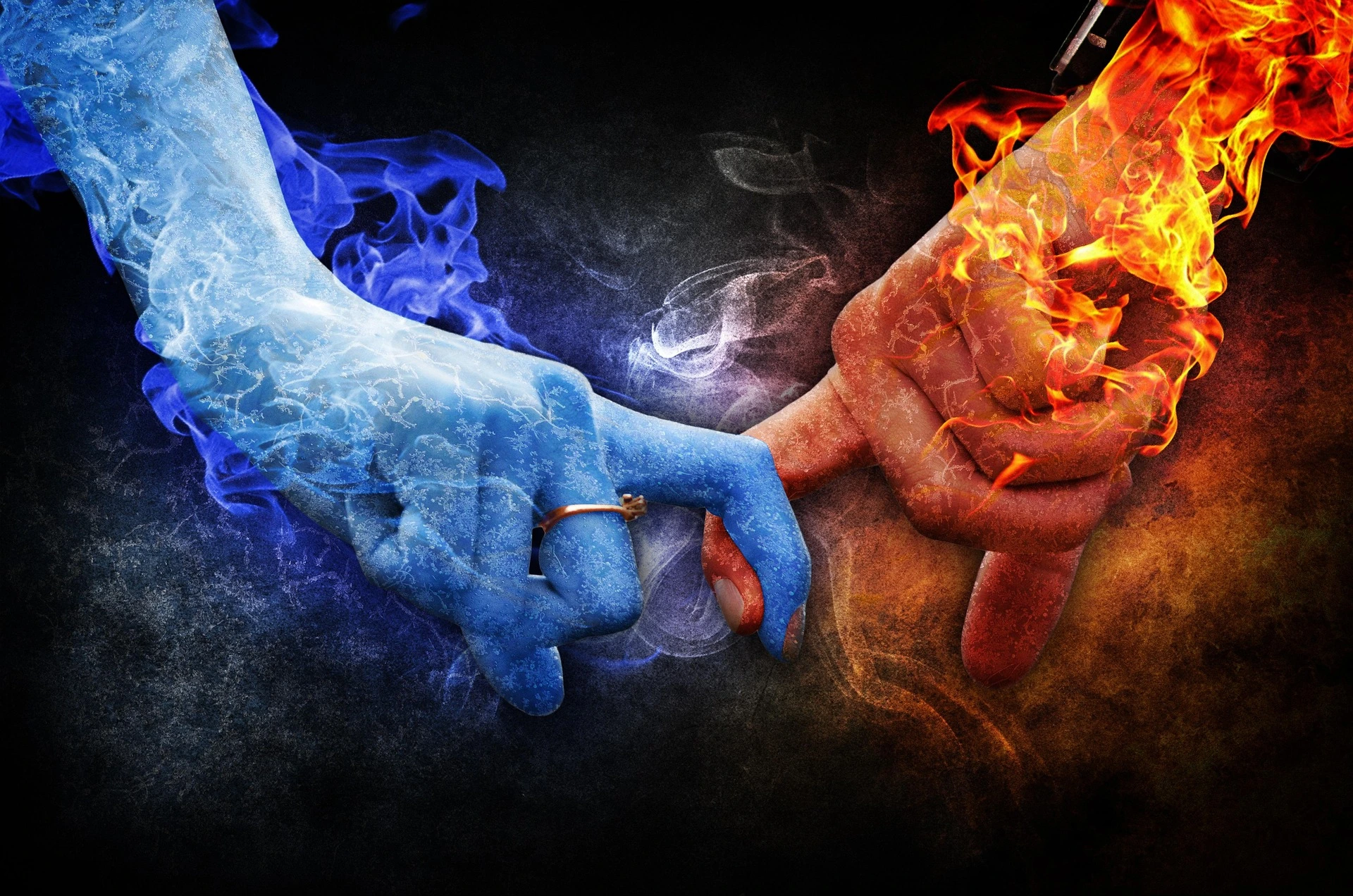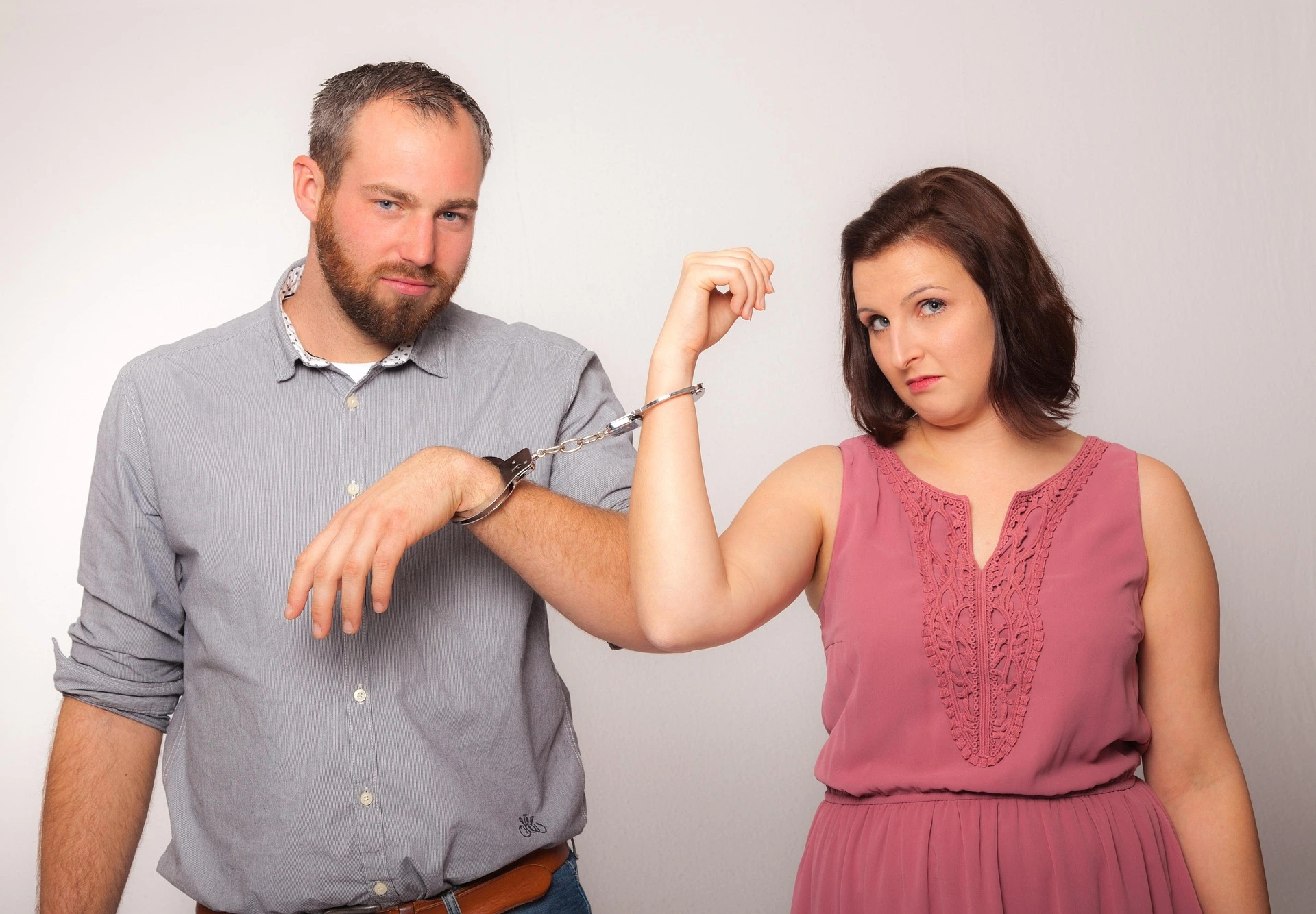Introduction: Understanding the Nature of Obsessive Relationship Disorder
I’ve always believed that love should feel empowering—not consuming. But what happens when that love becomes a relentless obsession, one that takes over your thoughts, behaviors, and even your identity? That’s where obsessive relationship disorder comes in—a term that may sound intense, but it describes a reality that many silently struggle with.
Obsessive relationship disorder, sometimes known as obsessive love disorder (OLD), is a condition that blurs the line between love and emotional dependence. It’s often mistaken for passionate love because of how intense it feels at first. You might think you’re just “crazy in love,” but in truth, this level of fixation can be harmful—to you and the person you’re with.
The danger lies in its disguise. From the outside, it may look like someone deeply devoted to their partner. But behind the scenes, there’s constant anxiety, possessiveness, and an overwhelming fear of losing the relationship. And if you’ve ever felt like your entire world revolves around one person, I want you to know—you’re not alone, and more importantly, you’re not broken.
In this blog, we’ll dive deep into the signs of obsessive relationship disorder, explore its psychological roots, and map out real ways to heal. Whether you’re personally experiencing it or witnessing it in someone close to you, this guide will offer clarity, compassion, and hope.
Let’s unpack what this condition really means and why it’s so important to recognize it early.
What Is Obsessive Relationship Disorder (Also Known as Obsessive Love Disorder)?
At its core, obsessive relationship disorder is defined by an unhealthy emotional fixation on a romantic partner. It isn’t about love in the traditional sense—mutual respect, shared goals, or emotional balance. Instead, it’s about control, fear, and dependency.
People with this disorder often believe they cannot live without their partner. Their thoughts become consumed with the idea of the person they’re attached to, leading to behaviors that are not only intrusive but also damaging. This could mean anything from constant texting to trying to control their partner’s whereabouts or even becoming emotionally manipulative to avoid separation.
So how is it different from simply loving someone deeply?
Healthy relationships are rooted in trust and autonomy. You can love someone and still enjoy time alone. You can care about someone’s wellbeing without needing to monitor their every move. In contrast, someone with obsessive relationship disorder may feel panic, jealousy, or despair when their partner is out of reach—even for normal reasons like work or seeing friends.
Psychologically, obsessive relationship disorder is often linked to other mental health conditions. It’s commonly associated with borderline personality disorder, obsessive-compulsive tendencies, or attachment-related trauma. In some extreme cases, it may also include delusional beliefs—like assuming love is mutual when it’s clearly not.
Let me give you an example that might resonate. Imagine someone named “Lena,” who met her partner six months ago. Since then, she’s stopped seeing friends, checks her partner’s phone when he’s not looking, and panics if he doesn’t reply to her texts within minutes. She believes this is just “being in love”—but in reality, these are the early warning signs of obsessive relationship disorder.
Major Signs of Obsessive Relationship Disorder in a Partner
Recognizing the symptoms of obsessive relationship disorder can be life-changing—for yourself or someone close to you. Let’s walk through the most common behaviors associated with this condition.
1. Intense Preoccupation With the Partner
A person with obsessive relationship disorder will find it nearly impossible to focus on anything outside the relationship. Work, hobbies, family—all of it takes a backseat. Their mind constantly loops with thoughts of their partner, often imagining worst-case scenarios or replaying past conversations for hidden meanings.
This kind of mental overdrive is exhausting. It reinforces fear and insecurity, making it hard to live in the present. It’s also a key component of emotional damage caused by obsessive relationships, because the sufferer often abandons their own life in pursuit of someone else’s.
2. Possessiveness and Extreme Jealousy
Obsessive relationship disorder often creates a breeding ground for possessiveness. This goes far beyond typical jealousy. The partner may become uncomfortable or angry when you talk to coworkers, friends—or even family. They might demand constant updates on your whereabouts or try to limit your social connections.
This is where boundaries begin to dissolve. The obsessive partner may start monitoring your social media, questioning every interaction, or accusing you without cause. The signs of obsessive relationship disorder in a partner often show up in how they try to restrict your freedom under the guise of “love.” Read my blog on jealousy in relationships.
3. Compulsive Communication Patterns
If someone is blowing up your phone with texts or calls, demanding immediate replies, or constantly seeking reassurance, it’s not just clinginess—it could be compulsive behavior linked to obsessive relationship disorder. These actions stem from deep fear: of abandonment, disconnection, or loss of control.
This constant need for contact is mentally draining for both people involved. It can push the partner away, which ironically makes the obsession even stronger. This cycle reinforces the need for how to deal with someone with obsessive relationship disorder with care and clear boundaries.
4. Repeated Boundary Violations
Boundaries don’t exist in a truly obsessive dynamic. The partner may want access to your phone, social accounts, personal messages, or even private time. They might show up uninvited, demand exclusivity in early stages, or threaten self-harm if you try to set distance.
These are all red flags—not signs of devotion, but of obsession. And unfortunately, if these behaviors go unchecked, they can escalate into more dangerous patterns.
5. Low Self-Esteem Tied to the Relationship
One of the most painful aspects of obsessive relationship disorder is how much it damages the sufferer’s sense of self. People with this disorder often feel like they’re only valuable when they’re loved by someone else. Rejection—real or perceived—can trigger emotional breakdowns, panic, or even aggressive reactions.
This is why one of the biggest keys to healing is helping the person rebuild their identity outside of the relationship.
6. Delusional Beliefs About the Relationship
In some cases, the obsession reaches a delusional level. A person may believe that someone loves them back—even when there is no evidence, or the other person has clearly rejected them. This kind of thinking creates a distorted reality and can lead to stalking or harassment.
This is where the difference between love and obsessive relationship disorder becomes very clear. Real love respects reality. Obsession invents it.
Love vs. Obsession: Key Differences
| Aspect | Healthy Love | Obsessive Relationship Disorder |
| Focus | Shared growth and freedom | Total fixation on one person |
| Jealousy | Situational and manageable | Constant, controlling, irrational |
| Self-Esteem | Independent of the relationship | Entirely tied to the partner |
| Boundaries | Mutually respected | Regularly crossed or ignored |
| Reaction to Rejection | Emotional regulation and resilience | Desperation, panic, or even aggression |
Causes and Contributing Factors of Obsessive Relationship Disorder
Understanding the root causes of obsessive relationship disorder is critical—not only for recovery but also for empathy. This disorder doesn’t appear out of nowhere. It often grows from a mix of unresolved trauma, attachment wounds, and mental health challenges.
Psychological Causes Behind Obsessive Relationship Disorder
Attachment Disorders: The Foundation of Emotional Obsession
Many people struggling with obsessive relationship disorder come from backgrounds marked by emotional inconsistency or abandonment. In psychological terms, this often results in anxious-preoccupied or disorganized attachment styles.
If a person didn’t receive stable love or attention as a child, they may grow up desperate to “cling” to love when they find it—even if it’s harmful. Their emotional logic becomes: “If I don’t hold on tightly, I’ll lose everything.”
A recent 2024 U.S.-based study covered by PsyPost confirmed that insecure attachment significantly increases the likelihood of developing obsessive relationship patterns, including emotional dependency and fear of abandonment.
Personality Disorders That Amplify Obsessive Patterns
Conditions like Borderline Personality Disorder (BPD) and Obsessive-Compulsive Disorder (OCD) can fuel the intense behaviors seen in obsessive relationship disorder. People with BPD often experience emotional extremes—love turns to fear, which quickly turns to rage or despair. OCD, on the other hand, may cause obsessive thoughts and rituals aimed at controlling the relationship.
In both cases, the person doesn’t want to be toxic—they feel out of control, which reinforces their need to micromanage the relationship dynamic.
Delusional Jealousy and Paranoia
Sometimes, obsessive relationship disorder includes delusional jealousy—a fixed, false belief that a partner is cheating or emotionally involved with someone else, even when there’s no evidence. This delusion can be worsened by substance abuse or other psychiatric conditions, and it often leads to stalking, aggression, or dangerous surveillance behaviors.
Environmental and Social Triggers of Obsessive Relationship Disorder
Past Trauma and Abandonment Wounds
One of the most common roots of obsessive relationship disorder is unresolved trauma—especially related to abandonment, neglect, or betrayal in past relationships. These emotional scars can drive people to form obsessive attachments as a form of self-protection, even if those attachments are clearly toxic.
Toxic Love Ideals in Media and Culture
Think about the movies and songs that glorify never giving up on love, chasing someone no matter what, or “you complete me” narratives. While romantic on the surface, these cultural messages can normalize unhealthy persistence and emotional dependency—hallmarks of obsessive relationship disorder.
The Role of Social Isolation in Obsession
When someone lacks healthy support systems—friends, family, or even a purpose—they are more likely to anchor their identity to a romantic partner. This vacuum of connection can intensify the need to cling to someone, even if it’s the wrong person.
Obsessive Relationship Disorder vs. Healthy Love: What’s the Difference?
One of the most misunderstood aspects of obsessive relationship disorder is how easily it masquerades as “real love.” But there are key differences that reveal the underlying emotional imbalance.
When Normal Emotions Become Pathological
It’s completely normal to feel jealousy or fear of losing someone you love. But in obsessive relationship disorder, these feelings are constant, intense, and controlling. The person isn’t just afraid—they’re consumed.
For example:
- Healthy jealousy might spark a conversation.
- Obsessive jealousy results in accusations, spying, or emotional blackmail.
Boundaries in Healthy Love vs. Obsessive Relationships
In a healthy relationship, boundaries are discussed and respected. In an obsessive one, boundaries are seen as threats. Wanting space, privacy, or autonomy is viewed as betrayal, and the obsessive partner may lash out or spiral into panic.
Dependency vs. Emotional Autonomy
Another hallmark of obsessive relationship disorder is emotional dependency—the feeling that you’re nothing without the other person. In contrast, healthy love enhances your sense of self. You feel stronger, not smaller, with the person you’re with.
Obsession in Action: Romantic Pursuit or Emotional Manipulation?
It can be tricky. Many obsessive partners use language like:
- “I can’t live without you.”
- “You’re everything to me.”
- “I’ll never stop loving you, no matter what.”
What sounds romantic on the surface may actually be emotional manipulation, especially if it’s being used to guilt, control, or trap someone in a dysfunctional dynamic.

Healing from Obsessive Relationship Disorder
If you or someone you know is dealing with obsessive relationship disorder, take heart: healing is absolutely possible. But it requires the courage to face the truth, the willingness to change, and a clear path forward.
Professional Treatments for Obsessive Relationship Disorder
- Therapy Is the First Step Toward Recovery
- Cognitive-Behavioral Therapy (CBT):
Helps individuals identify irrational thoughts like “I’m worthless without them,” and replace them with balanced, rational beliefs. - Dialectical Behavior Therapy (DBT):
Especially useful for people with BPD. Focuses on emotional regulation, mindfulness, and tolerating distress without destructive behavior. - Psychodynamic Therapy:
Explores the subconscious roots of obsession—often buried in childhood experiences—and helps release old emotional patterns.
According to a study published in the National Center for Biotechnology Information (NCBI), individuals with relationship obsessive–compulsive disorder (ROCD) exhibit symptoms such as intrusive thoughts, constant reassurance-seeking, and impaired functioning—making structured therapy essential.
- Medication for Co-Occurring Conditions
If obsessive relationship disorder is accompanied by anxiety, depression, or OCD, antidepressants (SSRIs) or anti-anxiety medications can help regulate mood and impulsive behaviors. Always consult with a licensed psychiatrist.
Self-Help & Recovery Techniques for Obsessive Relationship Disorder
- Acknowledge the Problem Without Shame
The first step to healing is naming the disorder. Say: “I have obsessive tendencies in relationships.” That’s not a weakness. It’s honesty.
- Set and Enforce Boundaries (Even If It Hurts)
Create emotional and physical space. That may mean unfollowing, blocking, or stopping all contact—especially if the fixation is one-sided or abusive.
- Rebuild Self-Identity Through Self-Care
Reconnect with the hobbies, passions, and people you’ve pushed aside. You are more than this relationship.
- Reframe Obsessive Thoughts
Challenge narratives like “They’re my everything” or “I’ll never love again.” Replace them with evidence-based affirmations: “I deserve mutual love” or “My worth isn’t tied to anyone else.”
- Limit Contact with the Object of Obsession
Cutting off or reducing communication—especially in the early stages—is often necessary to reset your nervous system and detach with dignity.
- Build a Support Network
Whether it’s therapy, support groups, or trusted friends—you cannot heal in isolation. Talk, vent, cry—but don’t do it alone.
Long-Term Personal Growth After Obsessive Relationship Disorder
- Rebuild Self-Esteem Through Achievements
Set personal goals outside of love. Career growth, fitness, travel—anything that brings your sense of self back into focus.
- Practice Letting Go Daily
Meditation, journaling, and mindfulness practices help you stop ruminating on “what ifs” and start living in the now.
- Repair Strained Relationships
Obsessive behavior often damages other relationships—family, friends, coworkers. Take responsibility and begin healing those bonds too.
- Redefine What Real Love Looks Like
Start imagining a relationship based on respect, freedom, and reciprocity—not obsession. That vision will keep you grounded when old patterns resurface.
When to Seek Help for Obsessive Relationship Disorder
Recognizing the need for help isn’t weakness—it’s the bravest step you can take toward reclaiming your emotional freedom. Obsessive relationship disorder doesn’t just hurt the person experiencing it—it often creates ripple effects that strain romantic partners, friendships, families, and even work life.
So, when is it time to seek professional support?
Warning Signs That Obsessive Relationship Disorder Is Getting Worse
If you’re seeing these patterns, it’s a clear signal to reach out:
- You cannot function without knowing where your partner is or who they’re with.
- You’ve lost interest in everything except the relationship.
- You use emotional threats (like self-harm or ultimatums) to stop a partner from leaving.
- Your partner or others have expressed fear or discomfort about your behavior.
- You feel ashamed, out of control, or desperate—and it’s not going away.
These behaviors are not just emotionally exhausting—they can escalate into emotional abuse or lead to personal burnout. Recognizing this is a crucial step toward how to deal with someone with obsessive relationship disorder, whether it’s yourself or a loved one.
Why Early Intervention for Obsessive Relationship Disorder Works Best
The earlier you begin treatment, the easier it is to reshape thought patterns before they become deeply entrenched. Therapy doesn’t just help manage obsessive behavior—it helps rebuild your sense of self, improves emotional regulation, and equips you to build healthy, reciprocal relationships.
With the right guidance, people have transformed completely—moving from clinging relationships to confident, emotionally independent lives.
How to Discuss Obsessive Relationship Disorder With a Therapist
If you’re afraid to say it out loud, start here:
“I think I get too attached to relationships. I feel out of control when I’m in love. I want to understand why.”
Therapists are trained to spot patterns and offer non-judgmental space for unpacking your emotional history. You don’t need to diagnose yourself—that’s their job. You just need to be open to change.
Helping a Loved One With Obsessive Relationship Disorder Seek Help
If someone you care about is showing signs of obsessive relationship disorder, approach them with compassion, not criticism.
Try:
- “I’ve noticed you’ve been really anxious in your relationship. I’m here for you if you ever want to talk.”
- “You deserve a love that brings peace, not pain. Have you thought about speaking to someone?”
- “It’s okay to need help. Therapy changed my life—I think it could help you too.”
Avoid shaming, diagnosing, or threatening. Plant the seed of support. That’s how healing begins.
Conclusion: From Obsessive Relationship Disorder to Emotional Freedom, Healing Is Possible
Let’s recap what we’ve learned.
Obsessive relationship disorder is more than intense love—it’s a condition rooted in emotional trauma, unmet needs, and mental health struggles. It shows up in possessiveness, compulsive contact, boundary violations, and delusional attachment—but behind it is often someone deeply afraid of being alone or unloved.
The good news? You can heal. Through therapy, self-reflection, and intentional growth, you can break free from obsessive patterns and build relationships grounded in respect, balance, and love that nurtures—not controls.
Final Thought
Love should liberate, not imprison. You are worthy of a connection that feeds your soul—not one that consumes it. Whether you’re healing from obsession or helping someone else find their way out, remember: it’s never too late to rewrite your story.

Frequently Asked Questions: Obsessive Relationship Disorder
Q1. What causes obsessive love disorder?
A. Obsessive love disorder is often caused by unresolved childhood trauma, attachment disorders, low self-esteem, or co-occurring conditions like borderline personality disorder or OCD. Environmental factors and toxic relationship patterns can also trigger it.
Q2. Can obsessive love turn into real love?
A. Not without intervention. Obsessive love is rooted in control and fear—not mutual respect. With therapy and personal growth, the individual can transform their attachment style and learn to build real, healthy love.
Q3. Is obsessive love a mental illness?
A. Obsessive love isn’t a standalone diagnosis in the DSM-5 but is often linked to other mental health disorders like BPD, delusional disorder, or obsessive-compulsive tendencies. It can have serious emotional and behavioral consequences if left untreated.
Q4. How do I stop being obsessive in a relationship?
A. Start by acknowledging the behavior without shame. Then seek therapy—especially CBT or DBT. Set healthy boundaries, reconnect with your identity, and limit contact if necessary. Practicing mindfulness and journaling can also help regulate obsessive thoughts.
Q5. What type of therapy works best for ORD?
A. Cognitive-Behavioral Therapy (CBT) is highly effective, helping you challenge irrational thoughts and behaviors. Dialectical Behavior Therapy (DBT) is also powerful, especially for those with BPD or intense emotional swings. Psychodynamic therapy may help uncover deep-seated roots.


